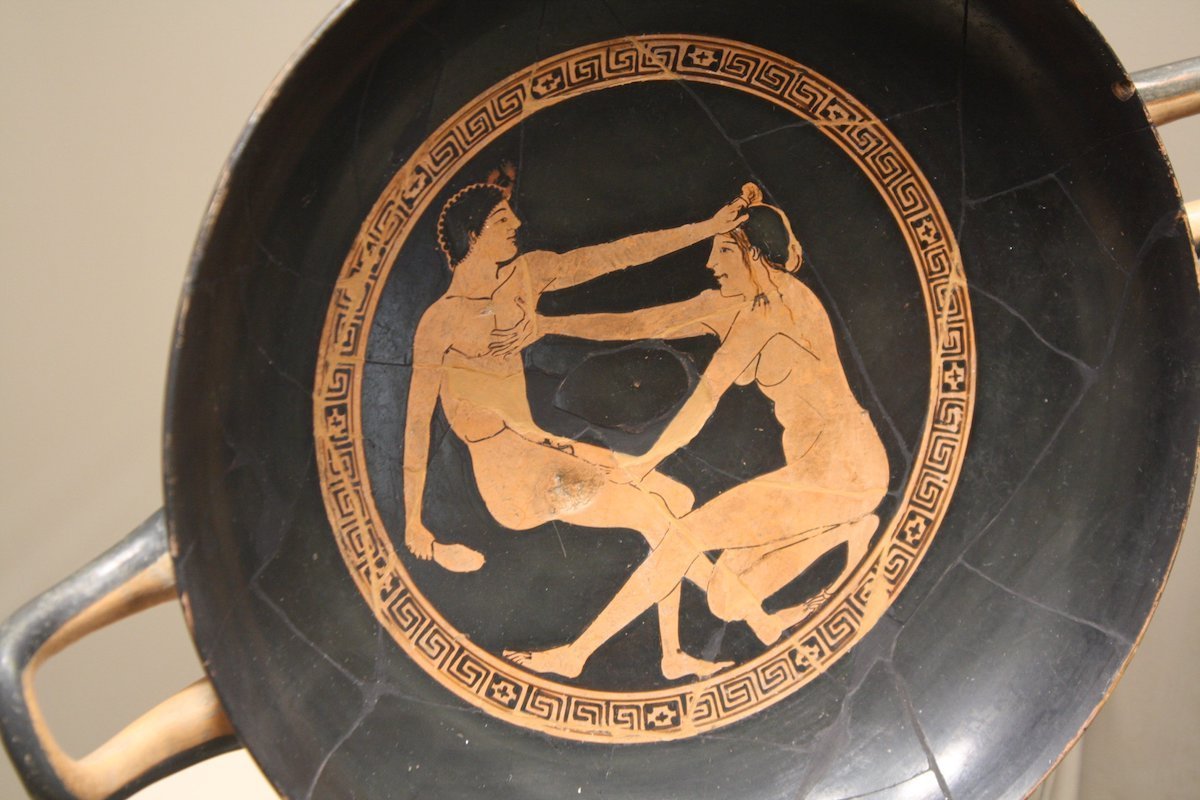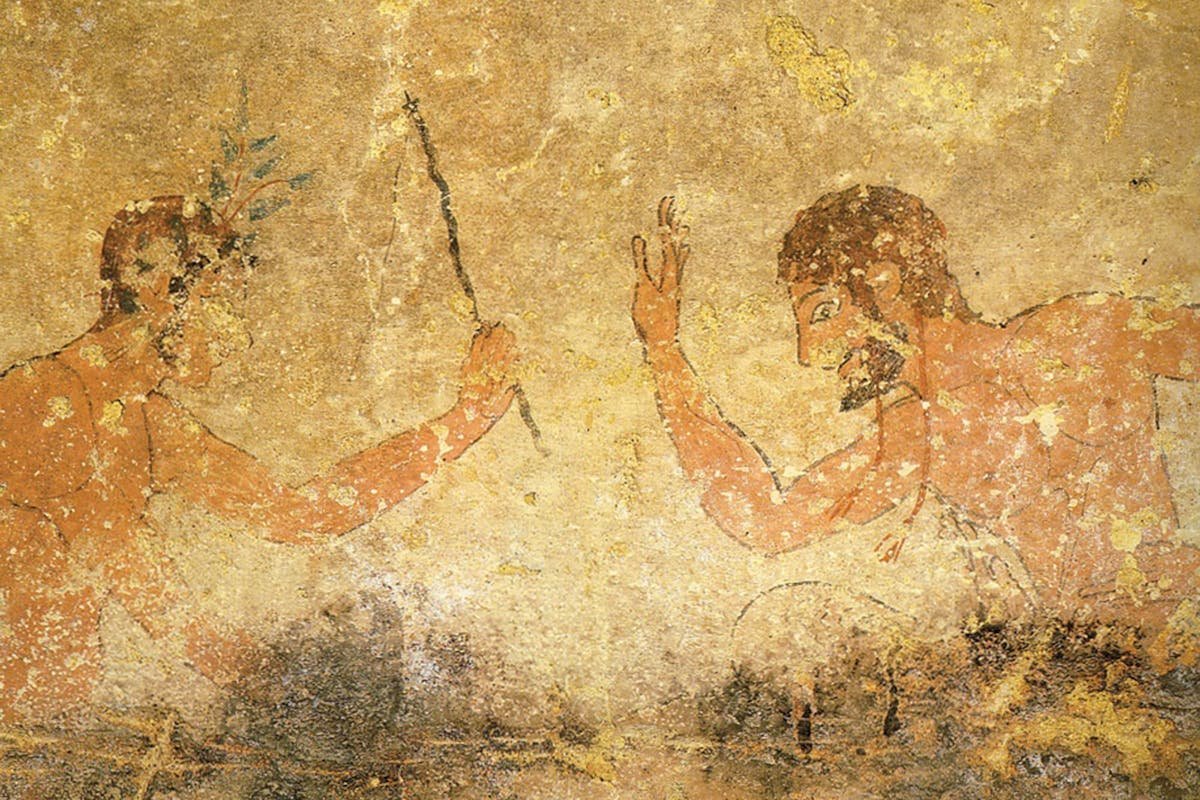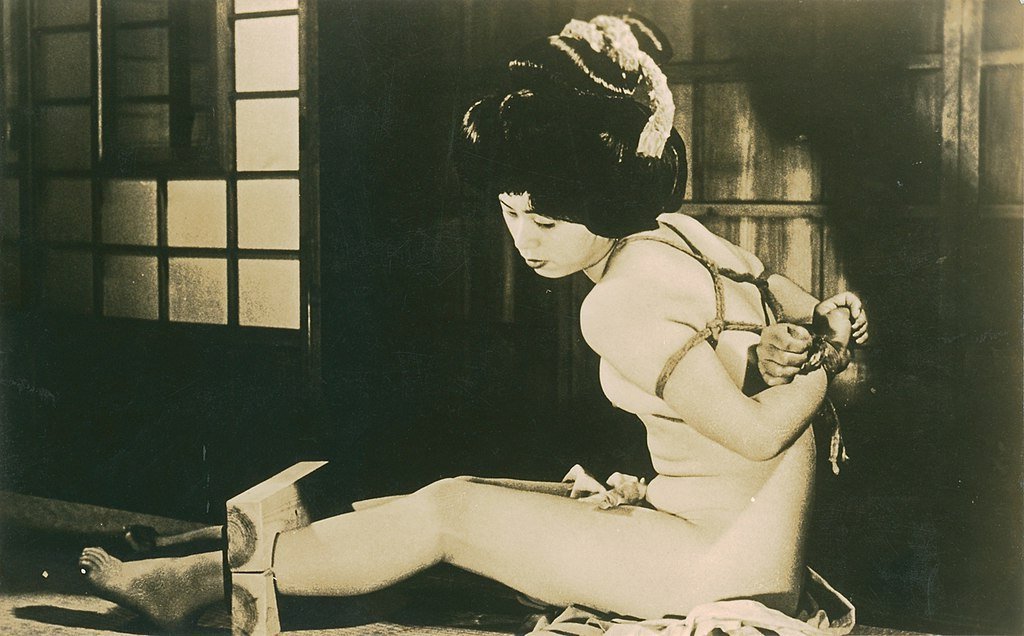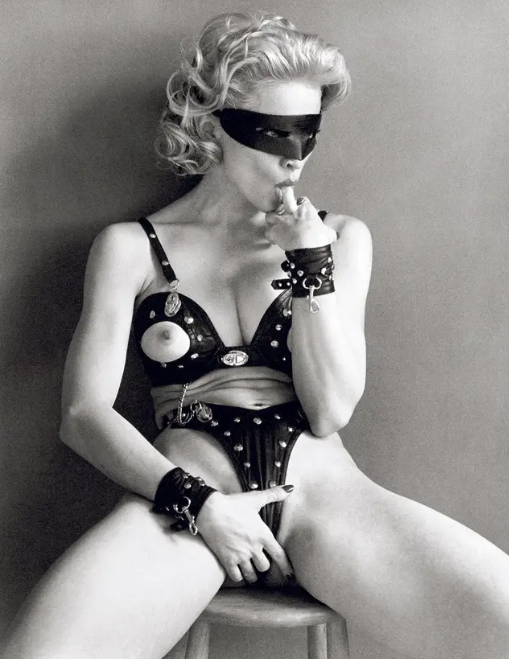Just how kinky were the ancient Greeks and Romans? What are the origins of Shibari? And where do the terms sadist and masochist come from? Victoria Blisse answers these questions and more by delving into the archives of debauchery in her brief history of BDSM.
BDSM has often been seen as different, deviant and devilish by society at large. Indeed, lots of people will tell you that indulging in flogging or bondage is completely unnatural! However, there are recorded instances of dominance and submission in some of the earliest textual records from ancient Mesopotamia – the region in southwestern Asia where the world's earliest civilization developed. Where there have been humans, there has been kink!
In modern times, the practice – and acceptance – of BDSM is becoming more mainstream, with easy access to information on the internet and the rolling back of old-fashioned taboos. So, how did we get to this point? Our brief (but brilliant) history of BDSM through the ages holds some of the answers...
Where does the history of BDSM begin?
In fact, the first written evidence of BDSM leads back to somewhere around 3000 BCE and the worship of the Goddess Inanna by the Sumerians. She was the goddess of love, war, beauty and fertility and was believed to mesmerize anyone – God or human – into pleasing her. And pleasing Inanna involved degrading oneself by stripping naked, dancing and enduring whippings. The followers would cry “Mercy!” when they had taken enough. Essentially, the safeword of its time!
The history of BDSM in Ancient Greece and Rome
Both the ancient Greeks and Romans were patriarchal societies and obsessed with masculinity. Men were encouraged to conquer others sexually – regardless of gender – with sex acts such as face fucking, penis in vagina (PIV) sex and anal sex.
However, if a woman actively sucked a man’s penis he would be seen as submissive, and that was a bad thing in the eyes of society at the time. Cunnilingus, masturbation by a man (doing it yourself meant you didn’t have anyone else to do it for you) and sex between two women were all seriously frowned upon.

A Greek scene: the male holds a sandal while pulling his partner's hair World History Encyclopedi
In Sparta, on wedding nights the groom would simulate kidnapping his bride and taking her by force, some consensual non consent to celebrate (!)... although, sadly, it might not have been consensual, as women were seen as property. They also often lent their wives out to other men too, so they could become pregnant and join the families together. A move of power and wealth, but with distinct D/s dynamics.
“The first written evidence of BDSM leads back to around 3000 BCE and the worship of the Goddess Inanna by the Sumerians. Pleasing Inanna involved degrading oneself by stripping naked, dancing and enduring whippings!”
In the suburban baths in Pompeii, Italy, there was a fresco of a tall woman wearing nothing but jewelry receiving oral sex from a much smaller, kneeling man. This was the most extreme display of submission at the time and so can probably be considered the first femdom scene to be recorded.
RELATED: History of the Dominatrix – Where Did FemDom Come From?
And in the country's Monterozzi necropolis there is a fresco depicting a man bent over as a table for a woman lying on his back being fucked by another man. Forniphilia at its finest, and definitely a kinky highlight of the history of BDSM. As is the fresco in the 'Tomb of Whipping' which features a woman being merrily spit-roasted by two guys – one has a whip raised to hit her and the other his hand. A more explicitly erotic flogging scene you couldn’t wish to see!

Slap happy: fresco from the 'Tomb of the Whipping' (courtesy of TarquiniaTurisimo)
Meanwhile, the ritual floggings of young men in Sparta on the altar of the Goddess Artemis Orthia became a tourist attraction as the men endured the pain without crying out. It might not have been an erotic experience, but as we kinksters know, sometimes it really is all about the pain.
BDSM in ancient Japan
It is from a small number of fighters born to casts of military leaders that the modern day practice of Shibari and Kinkbaku originates. Hojojutsu was a way of fighting with rope taught during the Warring Era that was designed to keep people restrained or to torture them. It was definitely not meant to be fun in any way.
RELATED: Advanced Bondage Techniques – A Passion For Rope Play
During the Edo period (1603-1863 CE) the Tokugawa shogunate ruled Japan putting an end to all the battling and from this iron fist regime bloomed the mercantile middle class. Newly wealthy and looking to enjoy the pleasures that only the nobility had access to.
As a way to keep them pliant and under the thumb of the government, pleasure quarters were created in centers of economic growth. These were walled areas containing tea houses, theaters, brothels and other entertainment venues. Anything could be purchased if you were rich enough, including all things kinky and debauched.
The Japanese painter Seiu Ito studied the hojojusu, and combined with mixing inspiration from kubaki theatre and ukiyoe wood block prints, he is commonly seen to be the creator of modern-day kinbaku.

Early Shibari seen in Yomikiri Romance magazine, 1953, supervised by Seiu Ito
The history of BDSM: 1800s-1900s
Well, we can’t discuss the history of BDSM without mentioning two people who inspired the terms sadist and masochist.
The Marquis De Sade was born in 1740 and published his novel The 120 days of Sodom in 1785. This, along with the books Justine and Juliette, cement him as the man who put the ‘sade’ in Sadist. His works depicted graphic sexual violence. At the time, De Sade was known for being a philosopher, but now he is for ever connected with BDSM.
On the other side of the coin, we have Leopold von Sacher-Masoch. This Austrian noble published Venus in Furs in 1869, a semi-autobiographical novel about a man who convinces a woman, Fannie, to make him her slave. It caused moral outrage and has had bans all over the world at different times for the explicit enjoyment of pain. It also led to the term masochism, to describe those who enjoy taking the pain inflicted by sadists.
“In the Monterozzi necropolis there is a fresco depicting a man bent over as a table for a woman lying on his back being fucked by another man. Forniphilia at its finest, and definitely a kinky highlight of the history of BDSM.”
In 1885 Richard van Krafft-Ebbing coined the terms ‘sadism and masochism’ in his book Psychopathia Sexualis to describe people as getting sexual pleasure from acts of violence (although he thought they were two completely separate disorders).

I'm a slave for you: Leopold and Fannie Wikimedia Commons
Freud later decided sadomasochism was the result of repressing the subconscious. He was sure sadism was a complaint of men and masochism only for women. It was 1929 when Havelock Ellis, the founder of sexology, refuted the findings of Krafft- Ebbing and Freud, claiming that sadism and masochism are complimentary emotional states and that any gender could experience either – or both – of them.
Of course, nowadays we know they can go together and overlap and it’s OK to enjoy your S&M consensually.
BDSM in post-war USA
We still use images from post–war icons such as Bettie Page to inspire our BDSM play now; there was a move towards the expression of fetish through art and creative media. Some artists such as Robert Mapplethorpe even had their images in mainstream magazines like Vogue.
There was a rush for freedom after the restriction of war, leading people to embrace who they were, louder and prouder than ever before. But for some, it was an inspiration to BDSM. The need to clean another’s boots or to give orders were a way to deal with life, post-war.

Kinky pin-up and icon: Bettie Page Facebook/Bettie Page
The history of BDSM wouldn’t be complete without the mention of queer leather clubs. Taken from the growth of motorcycle gangs and their out-and-out masculinity, the leather subculture took on these butch looks and channeled them into their own leather fetish wear as a direct rebellion to the expectation of gay men to be effeminate and soft.
This inspired the iconic Tom of Finland artwork. In his drawings and comics men were depicted with exaggerated muscles and genitalia. At first his work was considered as porn and he had to abide by strict censorship laws. But when the laws went, his work became even more explicit. It now appears – like Mapplethorpe's – in major museums around the world, showing its significance in the history of BDSM.
Modern BDSM history
As the sexual revolution sparked and raged through the 60s and into the 70s, the taboo history of BDSM became, well, just that – history. In the 80s and 90s BDSM imagery became more mainstream: Madonna made kink and fetish much more visible through her album Erotica, her book Sex, and the film In Bed With Madonna.

Madonna in her Erotica era (Courtesy of Saint Laurent Rive Droite & Callaway Books)
And, in some ways, the 1980s discovery of HIV and the corresponding fear in the gay community of acquiring it worked alongside the rise of BDSM in the mainstream. Indeed, BDSM was adopted as a safer alternative to anal sex when it came to risks of virus transmission.
“The history of BDSM wouldn’t be complete without the mention of queer leather clubs. Taken from the growth of motorcycle gangs and their out-and-out masculinity, the leather subculture took and channeled these butch looks.”
Of course, one of the main factors in the history of BDSM (and everything else it seems) is the arrival of the internet into the mainstream in the late 90s. Suddenly people around the globe could find information and talk to other kinksters from the comfort of their computers. It became a way to connect and share information, allowing the BDSM community to grow.

Who's the (leather) daddy? Tom of Finland artwork
The final FET: history of BDSM
And here ends our whirlwind tour of the history of BDSM. We don't have space to talk about everything – we haven't even mentioned 50 Shades (!) – and, indeed, there is much more to talk about. Did you know, for example, that the Karmasutra mentions a number of places to hit a person to increase sexual pleasure?
There is a whole lot of BDSM out there and there always has been. Sometimes it can feel lonely being a kinkster in a world of normalcy. Just remember all the rich BDSM history we have and the huge community you are now part of and you’ll no longer feel alone. •
Victoria Blisse was an erotic author and sex-positive Reverend. She helped shape fetish.com and FET from the very beginning and we're eternally grateful for her passion and creativity. Sadly, she passed away in January 2024. We hope that whenever her articles are read, she'll be honored.
If you want to talk to others about your kink and the history of it, start a thread on the fetish.com forum and see what others have to say!


-min.jpg.5593ba953fd5b61039f30f5287cdb17c.jpg)







Join the conversation
You can post now and register later. If you have an account, sign in now to post with your account.